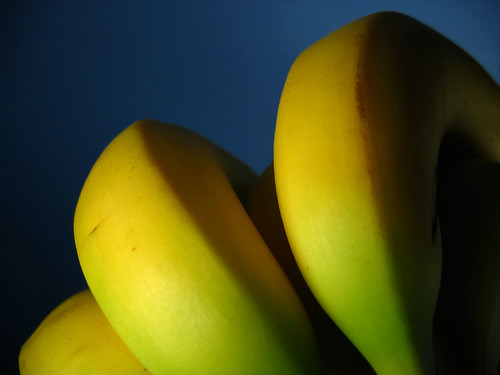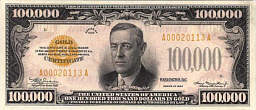
Respect for the United States
The Kingdom of Morocco was the world’s first country to give the United States diplomatic recognition. The year was 1777.
Feltman’s Sausage in a Bun
Until Charles Feltman came along, the clam was king of Coney Island. But in 1871, Feltman started selling hot dogs from a small shore lot. He had 3,684 customers that year, and they loved Feltman’s sausage in a bun, spreading the news to their friends and neighbors. Word-of-mouth was all the advertising Feltman needed to grow his operation. By 1923, he had a chain of Coney Island restaurants (one of which is pictured here) that catered to the tastes of more than 5.2 million customers.

Going Bananas
It didn’t take long for the banana to become a regular part of American culture. The first bananas were introduced to the United States at the 1876 Philadelphia Centennial Exhibition. Each banana was wrapped in foil and sold for 10 cents. Today, the average U.S. resident consumes 28 pounds of bananas each year.

Parasite Keeps Host Alive
Parasites are survivors. Take the Wolbachia bacterium for example. It kills male Trichogramma wasps (pictured), which causes a problem. When the male wasp dies, so does the bacteria. But this bacterium is very clever. Scientists have observed that Wolbachia, once inside the wasp egg, can feminize a male embryo, turning it into a female and assuring that both host and parasite live on.

Migraines Are for Women
Women are about twice as likely as men to suffer from migraine headaches. That’s the result of a recent study by the Centers for Disease Control and Prevention. For both men and women, those who live with a partner other than a spouse, have more migraines than other population groups. Widowed men and women have the second highest level of risk.

To Dye For
Shirley Polykoff (pictured) wrote the slogan that made Clairol a household name: “Does she or doesn’t she?” But Polykoff’s work made as much of a difference in American culture as it did for the company she represented. Over the course of Polykoff’s career, the number of women who dyed their hair rose from 7 percent in the 1950s to 40 percent in the 1970s.

Biggest Bills for Banks Only
The largest bill ever produced by the U.S. Bureau of Engraving and Printing was a $100,000 Gold Certificate with the portrait of President Wilson on the front. But you won’t find one in a box in Grandma’s attic. The bills were never issued into circulation as public currency. Instead, they were used for official transactions between Federal Reserve banks.

Ultimate Athletes
The first Ironman triathlon competition, held in Hawaii in 1978, was the result of an argument between several Navy Seals, stationed on the islands. They couldn’t agree on who were the fittest athletes in the world: swimmers, cyclists or runners. John Collins and his wife, Judy, suggested that the only way to find out was to include all three sports in a single, 17-hour race. The 15 competitors in that event swam 2.4 miles, biked 112 miles and ran 26.2 miles. Now international in scope, Ironman triathlons will be held at 18 locations this year with an expected 22,000 participants.

Goat, Mouse or Deer?
The chevrotain, an animal with a name that means “goat kid,” has little relation to goats. Instead, the small Asian creature looks more like a small deer with its brown coat, speckled with white markings. That may be why some people refer to the animal — 13 inches high at the shoulder — as the “mouse deer.”

Buddha’s Canines
When Buddha passed away, his four canine teeth were saved as relics and passed down through the ages. One of those teeth has its own temple, The Temple of the Sacred Tooth Relic, in Sri Lanka. When the tooth first came to the country in the 4th century A.D., it was treated as a symbol of kingship for the nation’s rulers.

Pluto Platter
The first plastic “frisbie,” later named the Pluto Platter, was created in 1948 by a Los Angeles building inspector, Walter Morrison. The Wham-O Company bought rights to the invention in 1957 and changed the name to Frisbee. But some historians claim that Ultimate Frisbee, also known as Ultimate — the touch-football-like sport that created increased demand among adults for the flying disc — may be older than the toy itself. They’ve documented a game played by students at Gambler, Ohio’s Kenyon College as early as 1942, where players, having no Frisbee, tossed an Oven-Ex cake pan instead.

In Search of Einstein’s Brain
Albert Einstein died and was cremated in 1955. But it was rumored that Einstein’s brain had been preserved. The rumor proved true in 1978 when an enterprising reporter tracked the brain to the home of Dr. Thomas S. Harvey in Wichita, Kan. Harvey, the pathologist, who performed the final autopsy on Einstein, had stored the scientist’s brain in two mason jars and kept it for future study. Smart move.

Rocky & Bullwinkle Waited 10 Years
Rocky and Bullwinkle, the moose and squirrel stars of the 1959 cartoon, “Rocky and His Friends,” were already almost 10 years old when they finally made it on to primetime television. The two adventurers had been part of an earlier concept called “The Frostbite Falls Review,” where a gang of forest animals produce their own show. That cartoon, with Rocket J. Squirrel (a.k.a. Rocky) and Canadian Moose (Bullwinkle), didn’t appeal to advertisers.